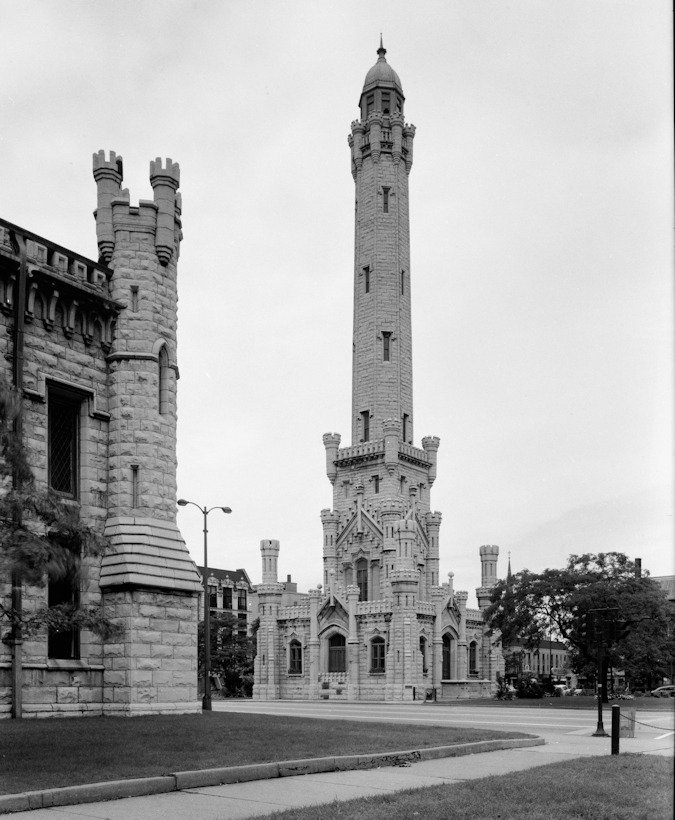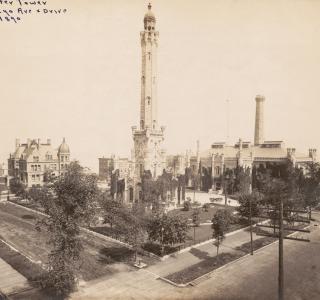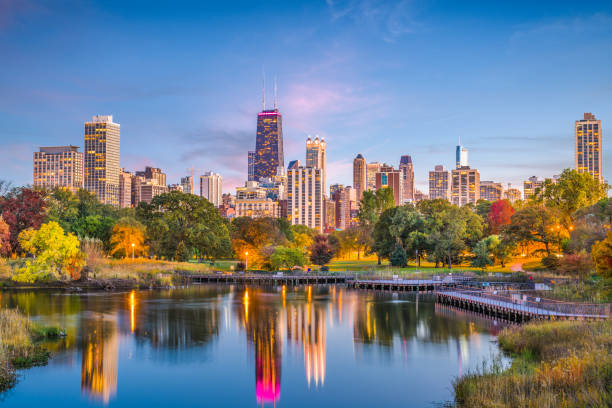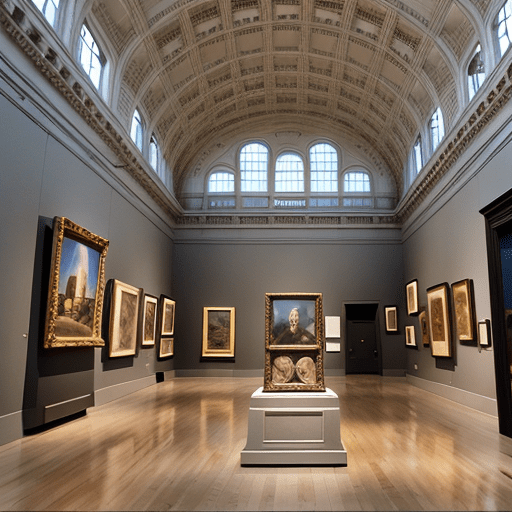Chicago Water Tower
 Prominent on Chicago’s prestigious Miracle Mile, the Chicago Water Tower stands as a historical beacon in the city. Built in 1869, this iconic structure not only survived the devastating Chicago Fire of 1871 but also continues to captivate both locals and tourists alike.
Prominent on Chicago’s prestigious Miracle Mile, the Chicago Water Tower stands as a historical beacon in the city. Built in 1869, this iconic structure not only survived the devastating Chicago Fire of 1871 but also continues to captivate both locals and tourists alike.
Let’s dive into the architectural marvel that is the Chicago Water Tower, exploring its rich history, resilience against the Chicago Fire, and significance as a cultural landmark in the city of Chicago. Through this journey, readers will gain insight into how this landmark has shaped the city’s landscape and identity.
The Architectural Grandeur of the Chicago Water Tower

Designed by William W. Boyington, the Chicago Water Tower is a masterpiece of the Gothic Revival style, a movement that sought to bring the grandeur of medieval architecture into the modern age. This aesthetic choice was both a nod to the past and a statement of the city’s forward-thinking attitude towards infrastructure and public buildings. The tower’s distinctive use of yellow Joliet limestone not only made it a visual standout at its completion in 1869 but also highlighted Chicago’s commitment to combining utility with architectural beauty.
- Architectural Highlights:
- Gothic Revival Style: Embracing the medieval past through its design.
- Yellow Joliet Limestone: A choice that balances durability with aesthetic appeal.
- Height: Stands at 154 feet, offering a fairy-tale silhouette against the Chicago skyline.
The Water Tower’s design, featuring an octagonal shaft and a cupola of steel and copper, showcases an attention to detail that was rare for utilitarian buildings of the time. Its construction in five distinct sections, with the base measuring 40 feet square, demonstrates a blend of form and function that was ahead of its time. Located at 806 N. Michigan Avenue, the tower’s presence on the Magnificent Mile provides a stark contrast to the surrounding modern buildings, serving as a reminder of Chicago’s resilience and architectural innovation.
A Survivor of the Great Chicago Fire of 1871
The Chicago Water Tower, completed just two years before the Great Chicago Fire of 1871, stands as a testament to the city’s resilience and architectural ingenuity. This historic structure not only survived the fire but also became a symbol of the enduring spirit of Chicago. Its survival is attributed to the efforts of Frank Trautman, a German immigrant fireman, who ingeniously protected the tower and the adjacent pumping station with wet woolen blankets and discarded canvas sails. This act of bravery ensured that the Water Tower remained as one of the few structures to withstand the devastation, marking it as a beacon of hope and recovery for the city.

- Key Points of Survival:
- Historical Significance: One of the few remnants of Old Chicago, linking the city to its pre-fire history.
- Symbol of Resilience: Represents Chicago’s ability to rebuild and thrive post-disaster.
- Architectural Preservation: A contributing property in the Old Chicago Water Tower District, highlighting its importance in architectural heritage.
Despite the destruction that engulfed much of the city, the Chicago Water Tower emerged as a central figure in the narrative of the Great Chicago Fire. It gained prominence as the only public building in the burned zone to survive, subsequently becoming a memorial to the city’s resilience and rebuilding efforts. This iconic structure’s continued existence serves as a reminder of Chicago’s capacity to overcome adversity, making it a cherished landmark and an American Water Landmark since 1969. Its story of survival and significance in the city’s recovery underscores the Water Tower’s impact on Chicago’s cultural and historical landscape.
The Transformation into a Cultural Beacon
Transforming from a historical edifice to a vibrant cultural beacon, the Chicago Water Tower has undergone significant changes. Today, it houses the City Gallery in the Historic Water Tower, showcasing local photographers and artists’ work. This gallery, open to the public with free admission, is a testament to Chicago’s thriving arts scene.
- Cultural Hub Highlights:
- City Gallery Exhibitions: Features local talent in photography, art, and filmmaking.
- Water Tower Arts District: A coalition of 15 cultural organizations, including the Museum of Contemporary Art Chicago and the International Museum of Surgical Science, fostering collaboration and highlighting the area’s cultural richness.
- Accessibility and Hours: The gallery is easily accessible by CTA, welcoming visitors Monday–Friday, 10am–7pm, and Saturday–Sunday, 10am–5pm, excluding holidays.
Moreover, the Water Tower Arts District aims to reshape the Water Tower’s perception from merely a historical or shopping landmark to a cornerstone of cultural activity. This district, through its array of notable institutions, encourages collaboration and cultural exchange, enriching Chicago’s cultural landscape. The Water Tower’s transformation underscores the city of Chicago’s commitment to arts and culture, making it a must-visit destination for both locals and tourists.
Beyond the Landmark: The Water Tower’s Impact on Chicago
The Chicago Water Tower, beyond its architectural beauty and historical significance, has deeply impacted the city of Chicago in various ways.
- Historical and Cultural Significance:
- Designated the first American Water Landmark in 1969, emphasizing its importance in American history.
- Listed as a Chicago Landmark in 1971, underlining its cultural and architectural value to the city.
- Its castle-like style influenced the design of some White Castle restaurant buildings, showcasing its impact beyond mere utility.
- Renovations and Functional Evolution:
- 1913-1916 and 1978 Renovations: These updates ensured the tower remained a functional part of the city’s infrastructure and a well-preserved historical site.
- Transition from Utility to Symbol: Initially built to house a standpipe system, it became functionally obsolete by 1906 but evolved into a symbol of resilience and architectural innovation.
- Contribution to Chicago’s Water Supply System:
- Integral part of the water supply system, drawing clean water from Lake Michigan.
- Played a crucial role in firefighting efforts and regulating water surges, highlighting its importance in the city’s development and safety measures.
The Chicago Water Tower’s journey from a functional part of the city’s early water distribution system to a treasured landmark encapsulates its multifaceted impact on Chicago. Its survival from the Great Chicago Fire of 1871 to becoming a beacon of hope and architectural marvel demonstrates its enduring legacy.
As a bastion that stood unwavering in the face of the Great Fire of 1871, the tower not only highlights Chicago’s architectural advancement but also serves as a historical marker of the city’s indomitable spirit. This journey through its history underscores the Water Tower’s significance not just as a physical landmark, but as a living reminder of Chicago’s capacity to evolve and thrive amidst challenges.
Moreover, the Chicago Water Tower’s role in fostering the city’s cultural richness, through the City Gallery and the surrounding Water Tower Arts District, attests to its continued influence beyond its initial purpose. By housing artistic expressions and serving as a nucleus for cultural endeavors, the tower reiterates the city’s commitment to celebrating arts and heritage. Through this lens, the Water Tower stands as a testament to Chicago’s resilience, architectural ingenuity, and cultural depth, maintaining its relevance and import in the heart of the city.
FAQs
What makes the Chicago Water Tower a notable landmark?
The Chicago Water Tower is renowned for being one of the few surviving structures after the Great Chicago Fire of 1871. Its endurance has become a symbol of the resilience and determination of Chicago, often referred to as the city’s “I Will” spirit. Today, it houses the City Gallery, an art gallery operated by the City of Chicago.
Is the Chicago Water Tower currently operational?
While the Chicago Water Tower is no longer used for its original purpose, it currently serves as the location for the Chicago Office of Tourism’s art gallery.
Are visitors permitted to enter the Chicago Water Tower?
Visitors can enter the historic Water Tower to appreciate its architecture and visit the art gallery, but climbing the tower itself is not allowed.



